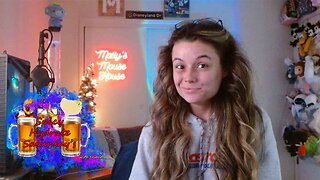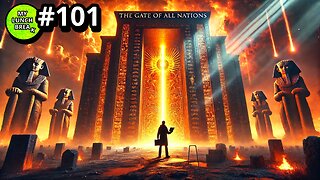Premium Only Content

SYNESTHESIA (Do You Have It?)
A fascinating neurological phenomenon known as synesthesia where stimulation of one sense or cognitive pathway involuntarily triggers experiences in a second sensory or cognitive pathway. This means that people with synesthesia can experience multiple senses simultaneously. 🤯
For example, they might see colors when they hear sounds 🎶, taste flavors when they see certain shapes 🍰, or feel textures when they hear words 📖. The most common form of synesthesia is grapheme-color synesthesia, where letters and numbers are associated with specific colors.
While synesthesia is often described as a "neurological superpower," it's important to note that it's not a disorder or a sign of heightened intelligence. It's simply a unique way of perceiving the world. 🌍
Scientists believe that synesthesia is caused by increased connectivity between different brain regions. This increased connectivity allows for more cross-talk between senses, leading to the unique experiences associated with synesthesia. 🧠
While synesthesia can be a source of wonder and creativity ✨, it can also be a source of confusion and frustration. People with synesthesia may find it difficult to explain their experiences to others, and they may also experience challenges in certain situations, such as reading or learning math. 📚
However, many synesthetes find their condition to be a valuable asset. It can enhance creativity, memory, and problem-solving skills. Some famous synesthetes include composers like Alexander Scriabin and painters like Wassily Kandinsky, who may have used their synesthetic experiences to create their art. 🎨
Links I read🔗:
🔗: https://my.clevelandclinic.org/health/symptoms/24995-synesthesia
-
 2:45:39
2:45:39
Tundra Tactical
11 hours ago $27.76 earnedTundra Nation Live : The Worlds Okayest Gun Live Stream
52.9K1 -
 17:06
17:06
Professor Nez
8 hours ago🚨BREAKING: Elon Musk to BUY MSNBC!? Dems STUNNED by Brian Williams’ Viral Video!
46.1K47 -
![If You Smell LALALALA What CHiLi IS COOKING!!... #RUMBLETAKEOVER [Overwatch 2]](https://1a-1791.com/video/s8/1/e/s/X/3/esX3u.0kob-small-If-You-Smell-LALALALA-What-.jpg) 4:27:40
4:27:40
CHiLi XDD
10 hours agoIf You Smell LALALALA What CHiLi IS COOKING!!... #RUMBLETAKEOVER [Overwatch 2]
27.9K1 -
 LIVE
LIVE
Delnorin Games
11 hours ago🔴 Live - Star Citizen
1,939 watching -
 1:39:44
1:39:44
HELMET FIRE
13 hours agoDEADROP IS BACK!
143K8 -
 10:03
10:03
Tundra Tactical
15 hours ago $14.84 earnedBrandon Herrera Vies Bid for ATF Director!
92K16 -
 22:01
22:01
DeVory Darkins
1 day ago $36.29 earnedHakeem Jeffries SHUTS DOWN The View as Matt Gaetz Speaks out
80.8K127 -
 2:02:54
2:02:54
Mally_Mouse
14 hours agoLet's Play!! - Spicy Saturday
57.2K2 -
 1:33:06
1:33:06
Slightly Offensive
14 hours ago $30.74 earnedAre You Ready for What's Coming Next? | Just Chatting Chill Stream
77.2K42 -
 32:10
32:10
MYLUNCHBREAK CHANNEL PAGE
1 day agoThe Gate of All Nations
148K63